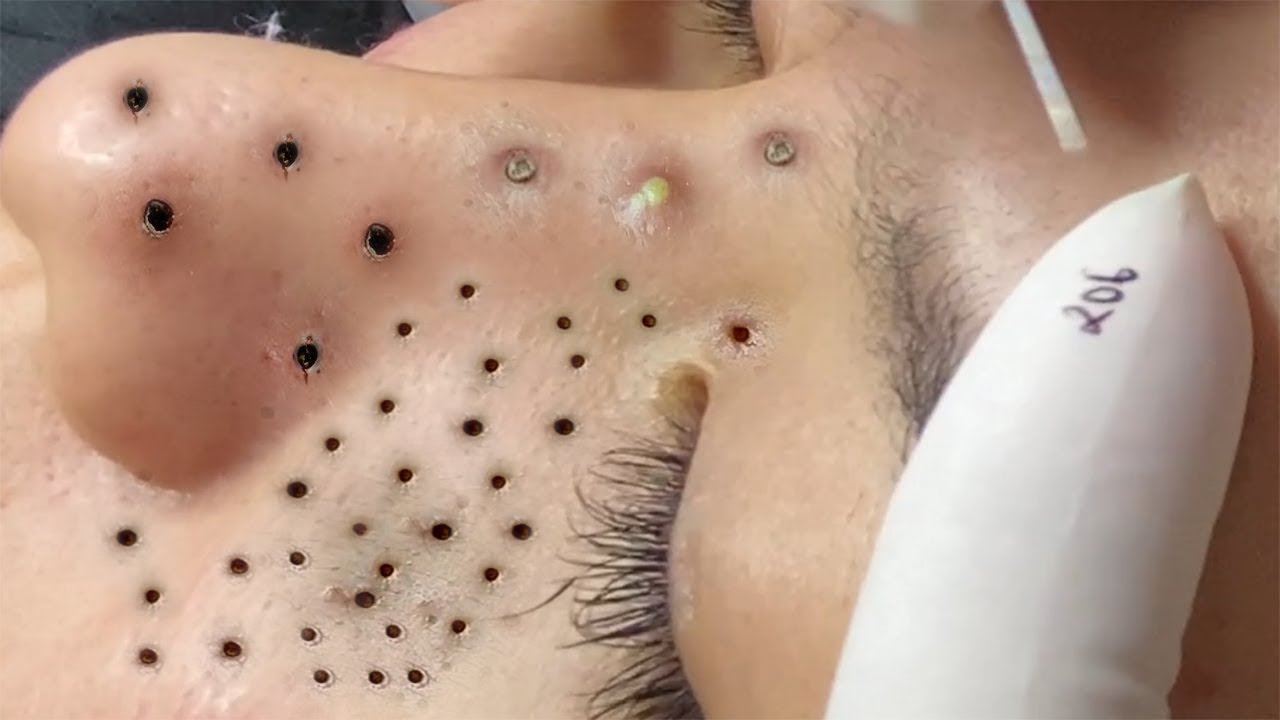What Are Blackheads?
Blackheads are a type of acne. Your skin is constantly sloughing off dead skin cells and clogging pores while secreting sebum (oil) that mixes with them.3
You may also notice dark pores crop up on your nose, cheeks, chin, or ears. These dark pores are blackheads, or open pores that fill with sebum and dead skin. Blackheads are typically clear and greasy and turn black when the pores are open to oxygen.4
Acne generally occurs if something builds up on the skin and clogs the pores. The types of acne vary depending on what clogs the pores.5 Excess oil and dead skin clog the pores to cause blackheads.4
Anyone can develop blackheads. Certain factors that increase your risk include:6
- Age: Adolescents are likelier to have blackheads than others.
- Certain medications: Corticosteroids and lithium may alter your hormones and increase your risk of blackheads.
- Genetics: Your risk of blackheads can increase if one or more of your family members has acne.
- Hormones: Hormone changes during puberty, the menstrual cycle, and pregnancy can increase the risk of blackheads. Levels of androgens, or male sex hormones, rise during puberty. Androgens cause the oil glands to widen.
How To Remove Blackheads
It’s important to avoid popping blackheads, which can irritate the skin.2 A dermatologist can advise treatments to reduce the build-up of oil and dead skin that clogs pores. Blackheads typically last between six to eight weeks.1
Antibiotics
Acne is not an infection, but antibiotics may help in moderate to severe cases.7 A dermatologist may advise antibiotics, either topical or oral. Doxycycline and erythromycin can reduce the inflammation and bacteria on the skin.
People with blackheads usually don’t use antibiotics for long periods, but it’s important to finish a complete round for them to work. Dermatologists also often advise using antibiotics with other treatments like benzoyl peroxide. Antibiotics may lose their effectiveness on their own.8
Chemical Peel
Chemical peels help reduce fine lines and wrinkles. Dermatologists also use chemical peels to remove blackheads.9
A deep peel requires general anesthesia, but a dermatologist won’t use this type of chemical peel for blackhead removal. You may need conscious sedation for the type of chemical peel a dermatologist would use to treat blackheads. They’ll advise using a cool compress and gently cream on the face after applying the peel.10
Cleansers and Exfoliators
Physical exfoliation can smooth and brighten your complexion. Physically exfoliating your skin will not reach the keratin and sebum inside your pores, so this method won’t effectively treat blackheads. Use chemical exfoliators with ingredients that target blackheads by loosening and dissolving the grime in your pores.
Opt for products that contain benzoyl peroxide, azelaic acid, or salicylic acid.711 For example, “[salicylic acid] removes excess oil and exfoliates dead cells from the skin’s surface to dry out pimples and clear out the pores,” Joshua Zeichner, MD, an associate professor of dermatology at the Icahn School of Medicine at Mount Sinai, told Health.
A dermatologist may advise using one of these chemical exfoliators with an antibiotic or topical retinoid.11 Products with ingredients like resorcinol and sulfur also break down blackheads.7 Just make sure to stagger the application of these products.
Comedo Extraction
Dermatologists warn against popping blackheads on your own, but they can safely do so to get rid of them. Comedo extraction involves using sterile tools to remove blackheads.2
People typically receive comedo extraction when other treatments fail. Comedo extraction doesn’t cure blackheads. You’ll need to maintain a good skin care regimen with other treatments to prevent future acne.2
Laser Therapies
Laser therapies may effectively treat blackheads if you use them with other treatments. Only certain types of lasers remove blackheads. Photo pneumatic therapy uses an intense pulsed light (IPL) laser with a vacuum to remove oil and dead skin cells, reducing blackheads. Visible and infrared light, in contrast, don’t treat blackheads.12
The best results take multiple sessions to achieve. Laser therapies may cause mild side effects like stinging and burning. Lasers rarely cause long-lasting pain, burns, and blisters.12
Microdermabrasion
You can perform microdermabrasion at home or receive the treatment in a facial plastic surgeon’s office. Both options exfoliate the skin to treat blackheads. A dermatologist can penetrate the skin deeper than home remedies.13
A dermatologist uses a device to remove the top layer of your skin. They will then gently apply moisturizer to the affected areas. The entire process takes about 30 to 40 minutes.14
People typically receive five to 16 treatments. You must take extra care of your skin after each session. After-care includes gently moisturizing your skin and protecting it from the sun. You may notice your face swell or get pink or red.14
Retinoids
Retinoids, topical or oral, are a class of treatments derived from vitamin A. Examples of topical retinoids include tretinoin, tazarotene, and trifarotene. Retinoids unclog pores, enhance cell turnover, and even out skin texture.15
A dermatologist may advise gradually adding a topical retinoid to your skincare regimen and treating blackheads. You may start by applying a low dose every other day and eventually use the product daily.15
One of the side effects of retinoids is sun sensitivity. A dermatologist will likely advise that you be proactive about wearing sunscreen daily.15
You’ll want to avoid layering an acid, such as salicylic acid, with a retinoid. Both products exfoliate the skin and might cause irritation and inflammation.16 Stagger your application, such as using your products with acids during the day and saving your retinoids for nighttime.
Prevention
Try some of the following tips to prevent blackheads:17
- Avoid tight-fitting hats: Headbands and caps don’t cause blackheads, but they might worsen acne.
- Do not touch your face: It might be super tempting, but don’t try to pop the blackheads yourself. Popping blackheads may cause bacteria to enter your skin and cause an infection.
- Keep your hair out of your face: Another likely culprit of blackheads could be your hair. The oil that builds up on your hair can block the pores, especially if you have a fringe or bangs.
- Stay consistent: Consistency in your skin care regimen is as helpful as the products that treat blackheads. Retinoids and salicylic acid help get rid of blackheads, but you need to continue using them to prevent your pores from refilling.
- Take your makeup off nightly: Never fall asleep without removing makeup if you wear it.
- Use products that will not clog your pores: Opt for oil-free and non-comedogenic products. Non-comedogenic means that the product will not clog your pores.

:max_bytes(150000):strip_icc():format(webp)/Health-GettyImages-1280517962-233cd04da166439f9752b52bf45a6d90.jpg)


